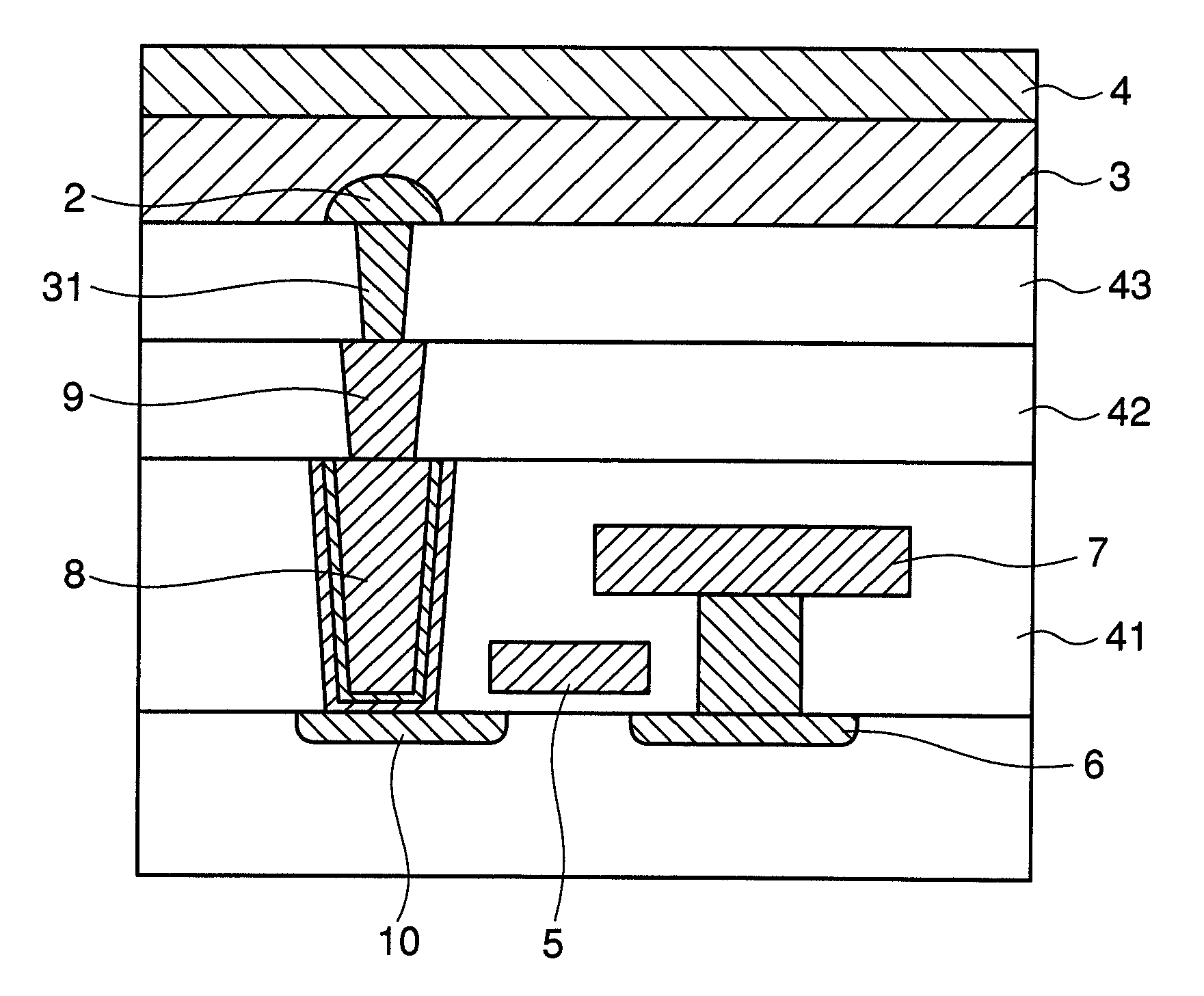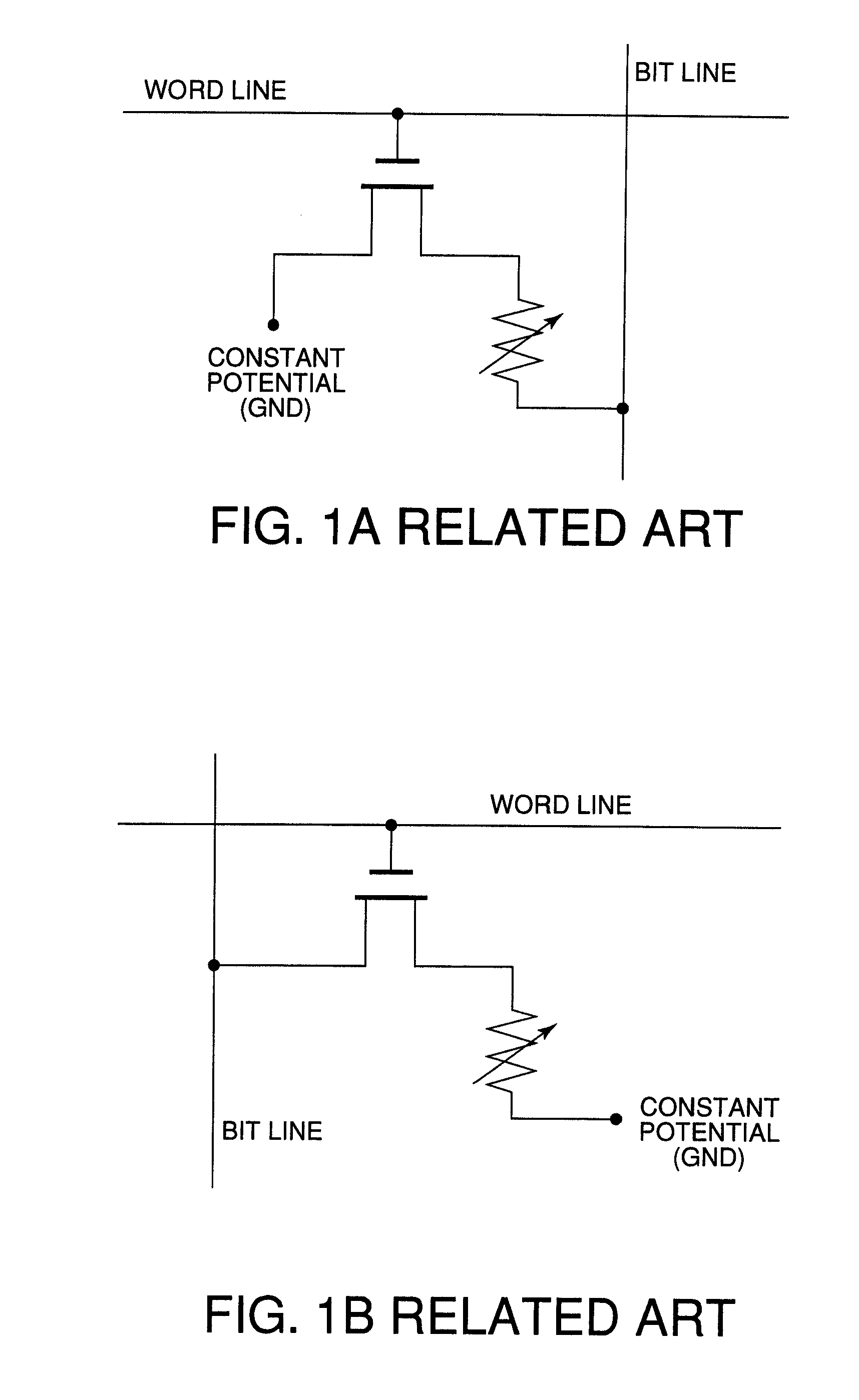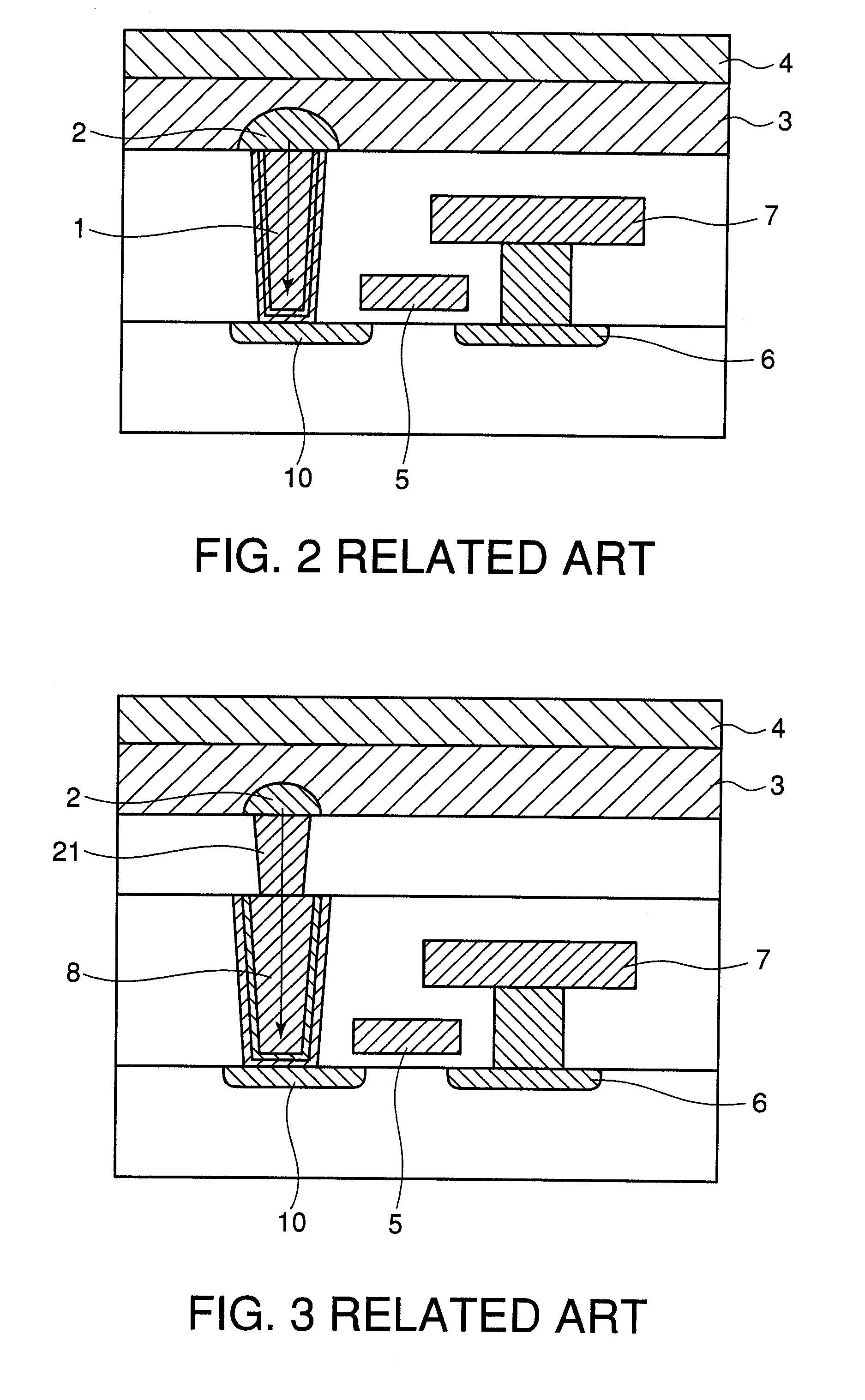Semiconductor device
a technology of semiconductors and devices, applied in the direction of semiconductor devices, bulk negative resistance effect devices, electrical appliances, etc., can solve the problems of increasing the size of the memory cell, increasing the cost performance of the memory, and reducing the memory performance, so as to increase the specific resistance of the top, the specific resistance is highest, and the diameter is smallest.
- Summary
- Abstract
- Description
- Claims
- Application Information
AI Technical Summary
Benefits of technology
Problems solved by technology
Method used
Image
Examples
Embodiment Construction
[0038]A semiconductor device according to the present invention will now be described in detail with reference to FIGS. 4 and 5. FIG. 4 is a cross-sectional view of a phase-change memory cell of the present invention. FIG. 5 is a cross-sectional view of another phase-change memory cell of the present invention. The semiconductor device of the present invention includes a buffer plug 9. Specifically, a three-stage structure composed of a heater electrode 31, the buffer plug 9, and a contact plug 8 connects between a phase-change film 3 and a drain diffusion layer 10.
[0039]The memory cell shown in FIG. 4 includes a cell transistor, a contact plug 8, a buffer plug 9, a heater electrode 31, a phase-change film 3, an upper electrode 4, and a GND wiring 7. The cell transistor is composed of a drain diffusion layer 10, a source diffusion layer 6, and a gate electrode 5. The source diffusion layer 6 is connected to the GND wiring 7 via a plug. The gate electrode 5 is connected to a word-lin...
PUM
 Login to View More
Login to View More Abstract
Description
Claims
Application Information
 Login to View More
Login to View More - R&D
- Intellectual Property
- Life Sciences
- Materials
- Tech Scout
- Unparalleled Data Quality
- Higher Quality Content
- 60% Fewer Hallucinations
Browse by: Latest US Patents, China's latest patents, Technical Efficacy Thesaurus, Application Domain, Technology Topic, Popular Technical Reports.
© 2025 PatSnap. All rights reserved.Legal|Privacy policy|Modern Slavery Act Transparency Statement|Sitemap|About US| Contact US: help@patsnap.com



